Typically, the rowhouses in Baltimore are brick boxes. There are a few wood framed rowhouses still around the city - and we looked at one that was beautiful - but for the most part they're all brick. There was even a law at some point in the 1800's requiring the houses and buildings be constructed with brick because fires were much angrier then and entire cities would be destroyed in hours.
I like the fact that our 200 year old box is made of brick.
In most houses, the brick would be covered with plaster. In our case - and many others - drywall would be hung over the plaster. The drywall is typically the easy part. The plaster should have been outlawed along with the wooden houses. I've read some articles about how the plaster would fall off in large pieces. Our plaster holds on to the brick for dear life.
A few tips:
-Wear gloves, dust mask and safety glasses;
-Your brick might not be pretty - test an area to make sure it looks good;
-We used hammers, prybars, mallets and a good dose of elbow grease;
-A labradoodle could do this - DIY 100%.
We haven't committed to doing huge areas just yet. Here's what we have so far.
This is in what will be the living room:
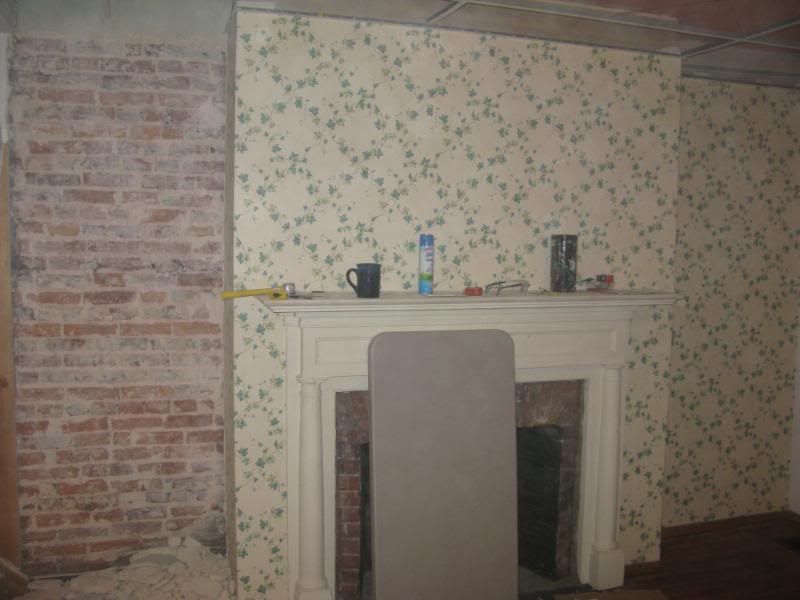
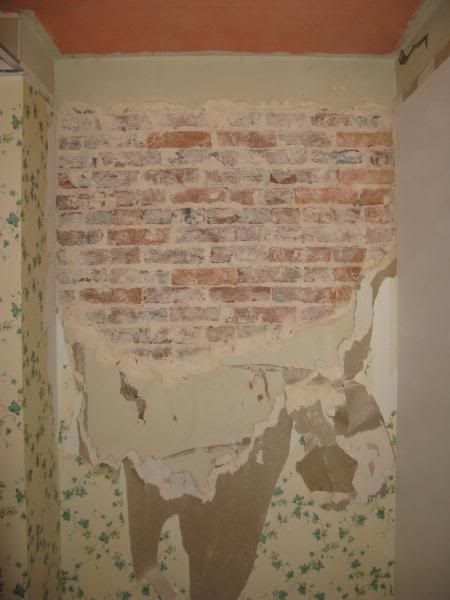
In this area, rather than hanging the drywall on furring strips, it was glued to the plaster for added fun!
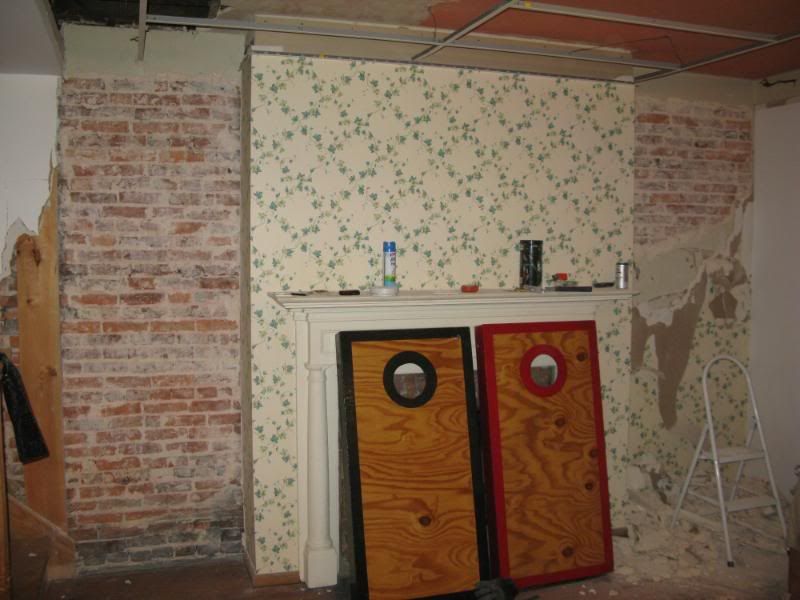
Eventually, the television will hang on the wall above the fireplace - oh my, I hate that wallpaper. Play Cornhole.
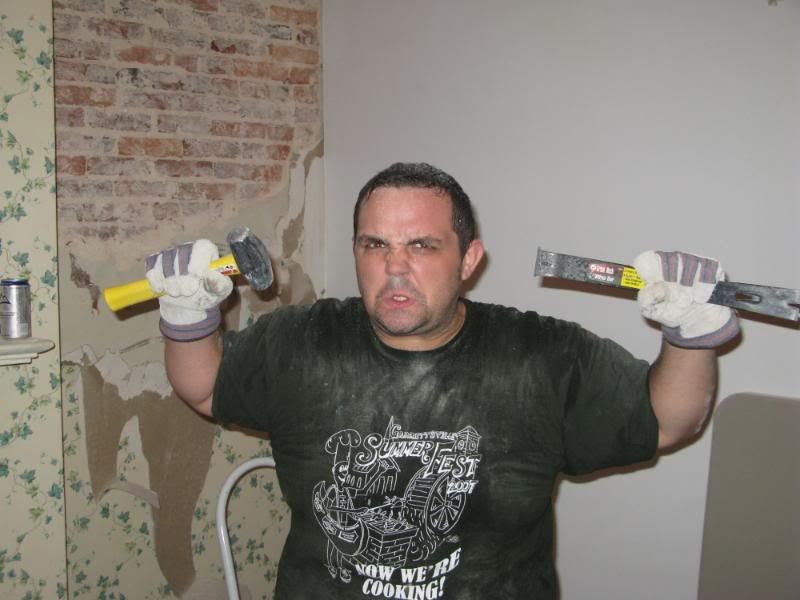
John McCain makes one angry.
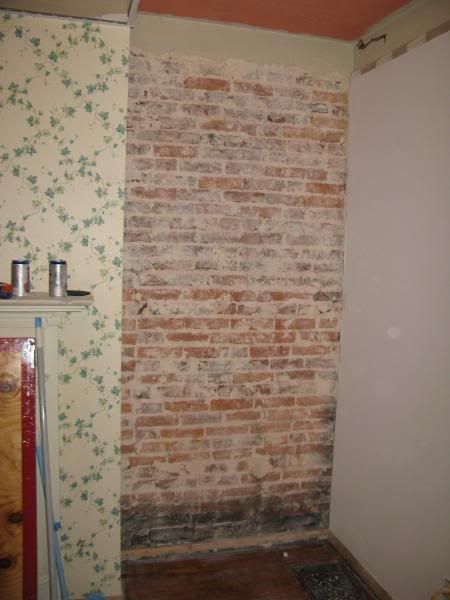
Speaking of fires... do you think there may have been one in the basement at some point?
The next step is cleaning the brick, which creates an incredible amount of dust and sore biceps. More on that later.
Oh, and we have to do something about the dining room:
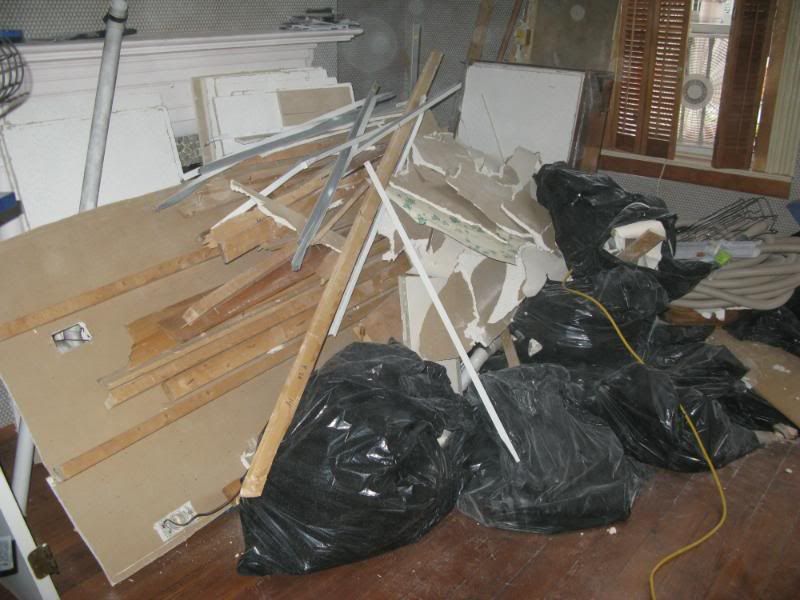
Meet Kanga and Jaxxon - renovations are exhausting, but plaster tastes delicious











